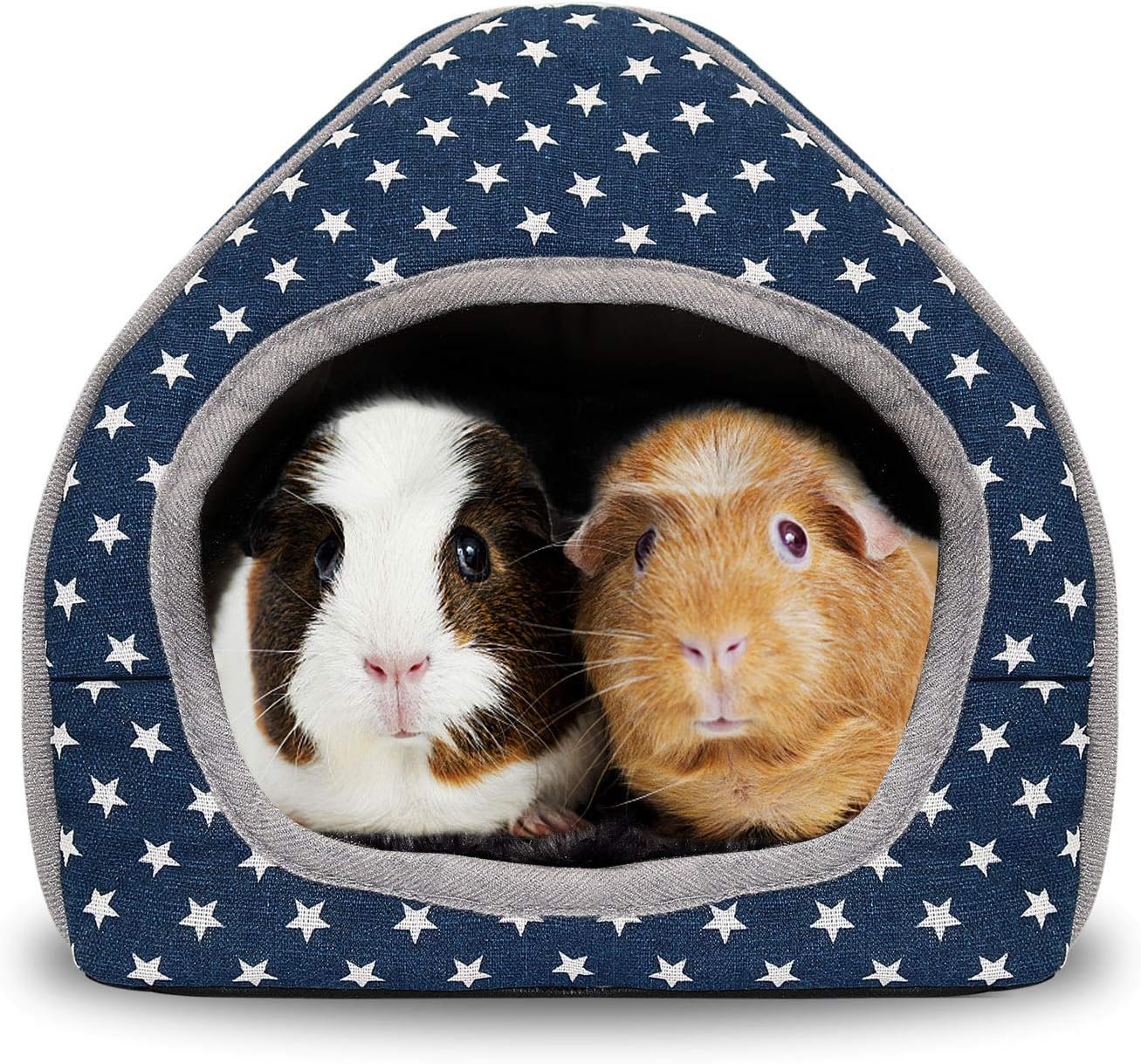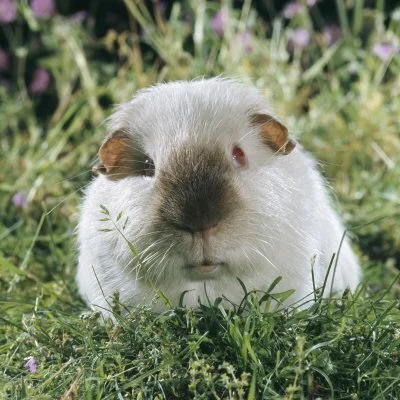Talkative, social and rather cute, guinea pigs are great as a child's first pet or as a lifelong hobby. They are members of the Cavy family (Caviidae) of rodents native to South America.
Housing
A guinea pig cage should have a solid floor covered in bedding rather than a wire-bottom cage, which can cause problems if the guinea pig catches its toes on the wire. If you use a cage with a wire floor, be sure to provide another surface where the guinea pig can relieve its feet.
Good bedding for guinea pigs will be absorbent, soft, and non-aromatic. Wood shaving bedding should be avoided. The aromatics in the wood can cause irritation to the guinea pig's very sensitive sense of smell. Cedar bedding can be toxic and pine too dusty, and corn cob can harbor mold spores.
A fluffy bedding, such as the commercially available recycled paper bedding, used in a thick layer is ideal. Shredded or pelleted aspen is also a good litter. Supply nesting materials and dry hays.
Cleanliness is very important for good guinea pig health. Areas that are soiled frequently should be cleaned once every day or two. The whole tray of bedding should be completely changed weekly or every other week, depending on the number of guinea pigs you have and the size of the cage.
Water
A plentiful supply of clean water is very important as well. Avoid using a dish for water; guinea pigs may push bedding into it or spill it. Damp bedding can lead to foot problems, so it's best to use a hanging water bottle.
Water needs to be changed daily. Guinea pigs like to spit food up the tube of their water bottle. Daily cleaning limits the chance that bacteria will grow in the water. Make sure that the drinking tube is not clogged by food.
Diet
The mainstay of a guinea pig's diet should be grass hay, such as timothy or fescue. Alfalfa and clover are legume hays, which are higher in calcium, protein, and calories. Legume hays may be appropriate for growing guinea pigs or pregnant ones, but not for adult guinea pigs.
Pelleted diets marketed for guinea pigs may be used in moderation. Limiting pellets by weight: 1 tablespoon pellets per pound of guinea pig. That means the average adult guinea pig can have roughly 2 tablespoons of pellets a day. Young, growing guinea pigs can have unlimited access to pelleted guinea pig food.
Pellets need to be fresh. The vitamin C in the food will degrade three months after manufacturing. Unlike most other domestic species, which produce their own vitamin C, guinea pigs must get all their required vitamin C from the food they eat.
Salt Lick?
Salt licks are not necessary for guinea pigs unless they are eating mineral-deficient hay. The hays sold for pet foods should not have this problem. If you do want to get your guinea pig a salt lick, the colored salt-and-mineral ones are better than the plain white ones, which have no added minerals. Salt licks can also help with getting your guinea pig to drink more water, if that is a concern.
As tempting as they are, pretty diet mixes containing grains and seeds are disastrous. Guinea pig digestive systems are designed for grass diets, which are high in fiber and low in carbohydrates. The sugars and starches in some diets can cause a change in the digestive bacteria, intestinal obstructions, and obesity. If your guinea pig has been on such a diet, switch to a plain pellet and hay diet gradually.
Treats
So what can you give your guinea pig for a treat? Think dark, leafy green vegetables, such as collard greens, parsley, and dandelion. Make sure not to feed them the same thing every day, in order to avoid potential problems from consuming too much of a vegetable that is high in certain minerals. These veggies are good treats for your cavy, something new and exciting that also provides extra moisture and vitamin C to their diet. If your yard has grass untreated with pesticides, guinea pigs can have outside time to graze as well. Just be sure to watch out for neighborhood cats and hungry hawks!
Cavy Facts
Adult Size: 1 – 2.5 lbs, 8 – 10 inches
Life Span: 4 – 5 Years
Male/Female
Sexing can be difficult when young. Invert the urethra to check for a penis. There is no difference in external appearance. Genitals can be obvious on males.
Compatibility
Females get along with each other, and a male can even be added. Males usually get along, after some settling of hierarchy, but will fight over a single female. Two males together is not recommended.
Origin
Native to the Andes mountains of South America.
Habitat/Territory
They make their homes in the cool and dry areas of the Andes. This terrain is void of large vegetation and so they feed on grass.
Guinea pigs make wonderful pets. For a happy and healthy guinea pig, follow these tips and consult your own veterinarian with further questions.




